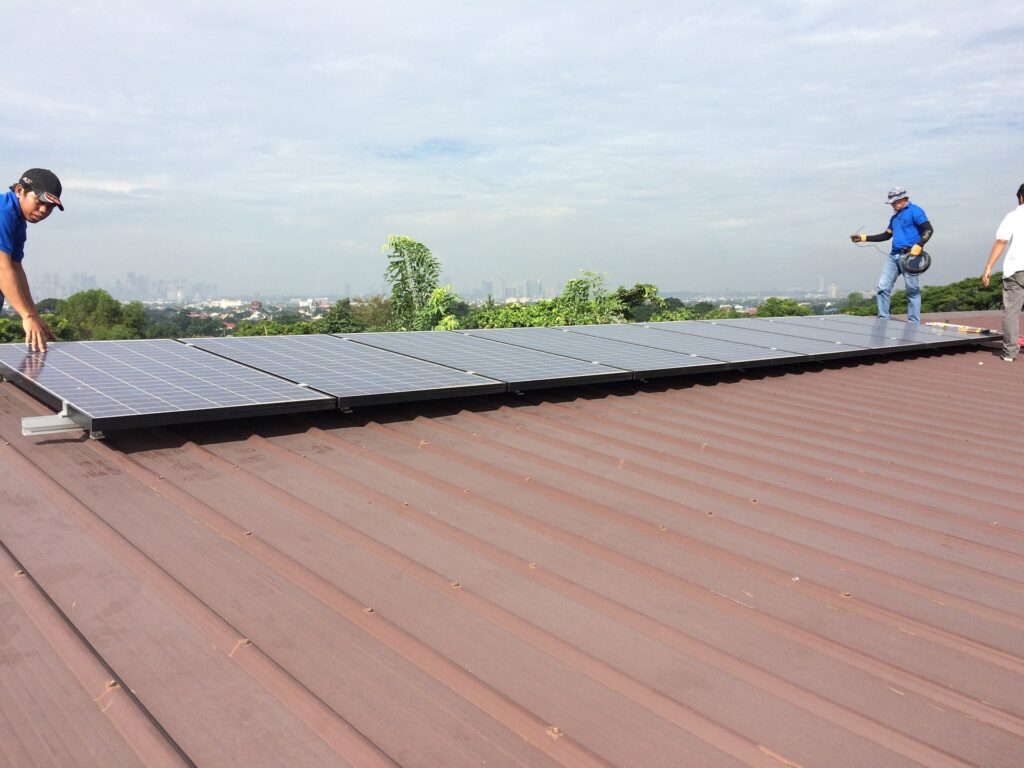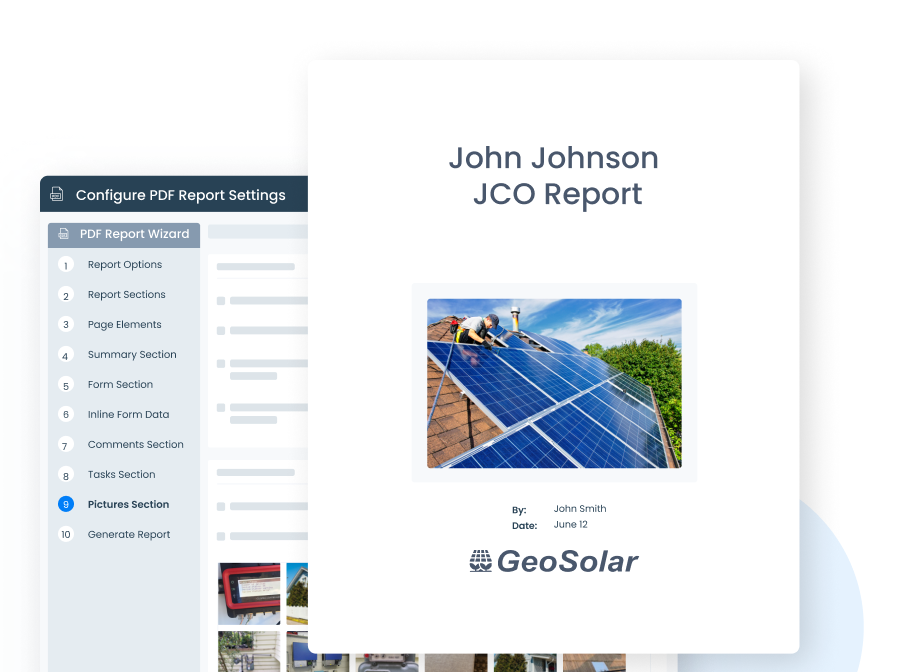Listen, we know that selecting a solar project management platform isn’t always easy. Evaluating alternatives, comparing costs, deciding on a software, and planning its implementation all take time and effort, not to mention you and your team have other responsibilities to juggle. Resources such as this one aim to focus on key platform features to make your search easier. In this case, we’re exploring automation as a function of solar project management software.
What is Solar Project Management Software?
Solar project management software allows renewable energy teams to track the status of multiple projects, manage project team members, forecast inventory and materials, and view real-time performance metrics. These platforms are a powerful way to organize customer data, quickly locate project documentation, and ensure compliance throughout the installation process.
Solar CRM and Project Management Combined
While solar project management software can be a powerful tool on its own, combining its functionality with that of a CRM can be truly beneficial for solar companies. This is because traditional Customer Relationship Management (CRM) tools were built for the office setting and therefore offer little to no functionality for installation crews or those operating in the field.
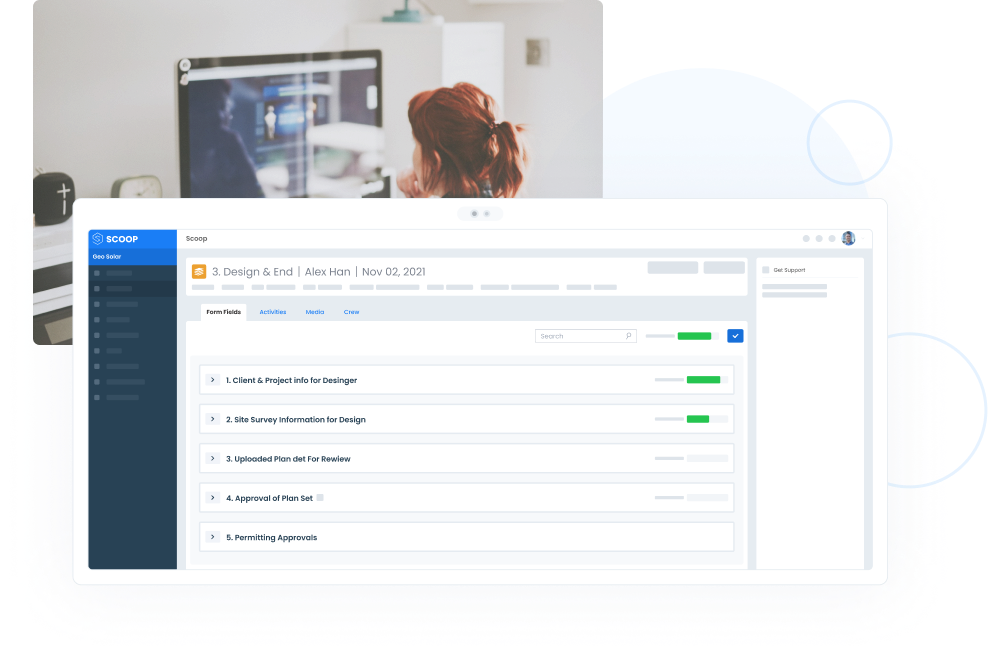
By choosing a platform that combines CRM and project management, your teams can have instant visibility on project progress, including client and site details, scheduling, and budget information. Scoop Solar is an example of this software, allowing renewable energy teams to create, track, and manage projects from both desktop and mobile devices.
The Power of Automation
While there are several useful project management features, automation is one of the most effective ways to increase efficiency across your organization. By automating manual and redundant tasks, your team can spend more time on what matters – providing quality products, services, and support to your customers. With Scoop, you can automatically notify your project manager when a proposal has been signed, update your financing team upon project completion, and much more.
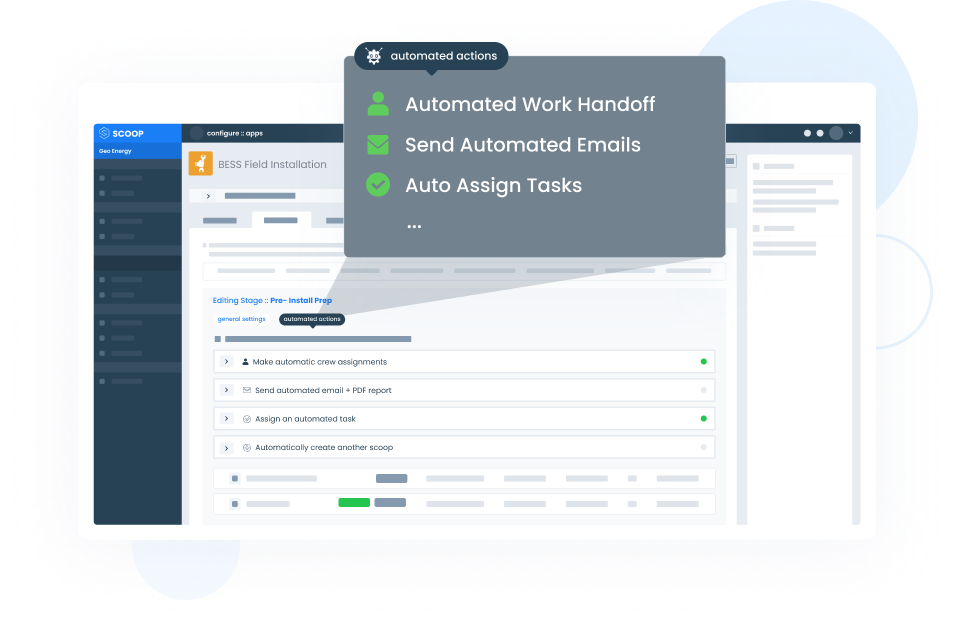
Automate Project Status and Workflows
Any solar project manager understands the time and effort that goes into managing complex solar projects, so there is nothing more frustrating than chasing down other stakeholders for project updates while simultaneously scheduling engineers or installers, keeping track of budgets, and managing timelines.
The Scoop platform is rooted in workflow automation and removing redundant systems for solar companies. Scoop’s Project Tracker Live Dashboard is an automated and real-time dashboard that makes monitoring projects, installations, and service visits simple. Not only is the dashboard completely customizable, allowing your team to configure project cards, phases, and at-a-glance data fields, but it is directly linked to the underlying phases and work activities of your projects – meaning it is always up-to-date, automatically and effortlessly.
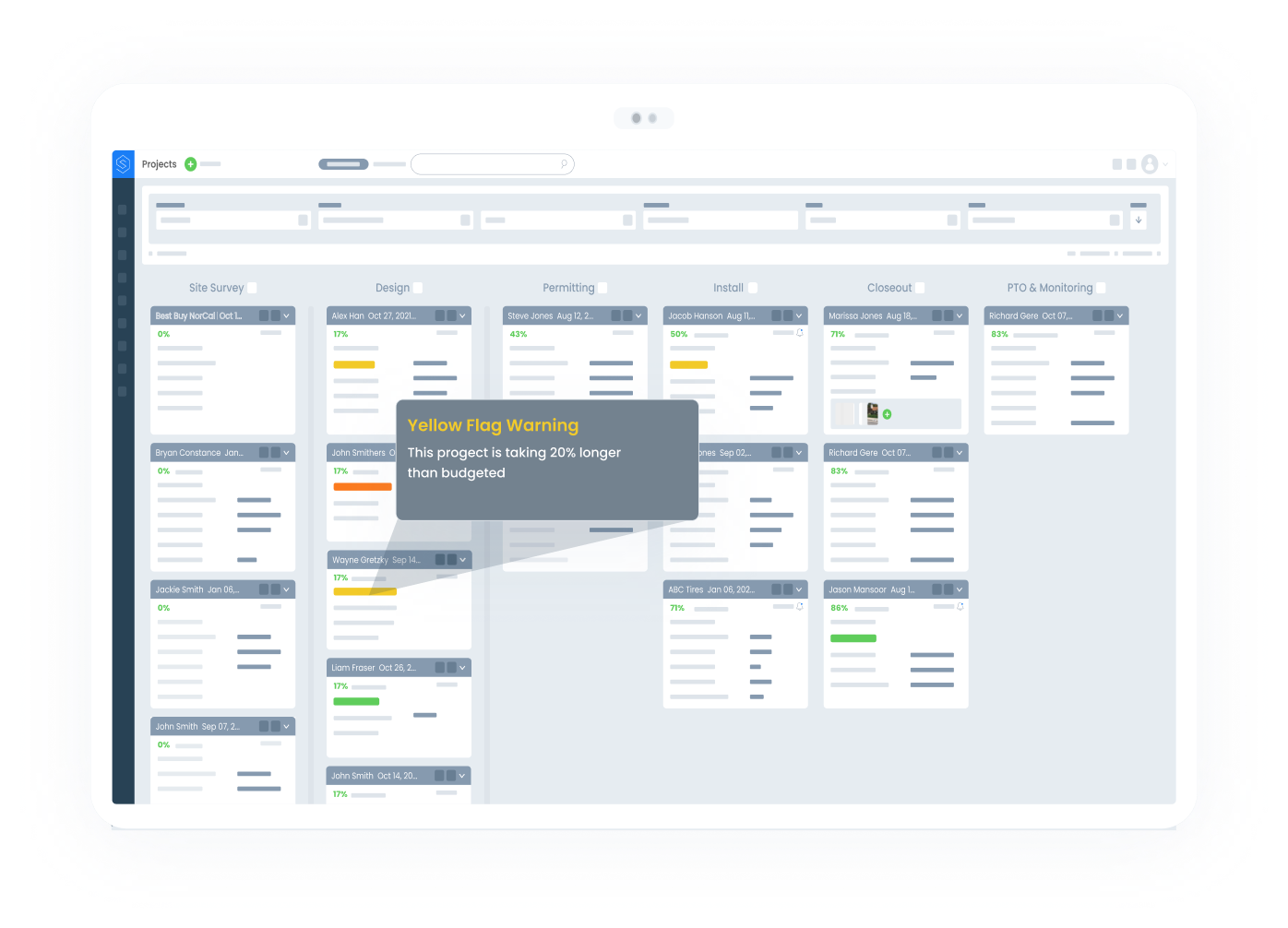
Trigger Tasks & Communications
Project delays can be costly, which is why effective communication can be so important to the success of a solar installation. Automation can mitigate risks by removing some of the manual legwork. Scoop’s founding team has a deep understanding of the renewable energy and solar industry, which is why the platform is built with its unique challenges, resources, and customers in mind.
One of these solutions is streamlined communication, particularly between office and field teams. Once your engineering team has completed a site survey, for example, and detailed project plans are uploaded to Scoop, your project manager can be notified automatically and marked as the project lead. This notification can include photos and documents, as well as assigning a task to create the installation schedules. This instant visibility ensures that solar projects are continually moving forward, ultimately saving you and your clients time and money.
Create Two-Way Data Integrations
One of the best use cases for using automation to improve the efficiency of a solar project is through integrations. By creating two-way data integrations, your solar project manager can add project details in one platform and relevant team members can see that information update in their primary software tool. Project management software can be integrated with solar proposal or design tools, ERP systems, accounting and financing software, and more.
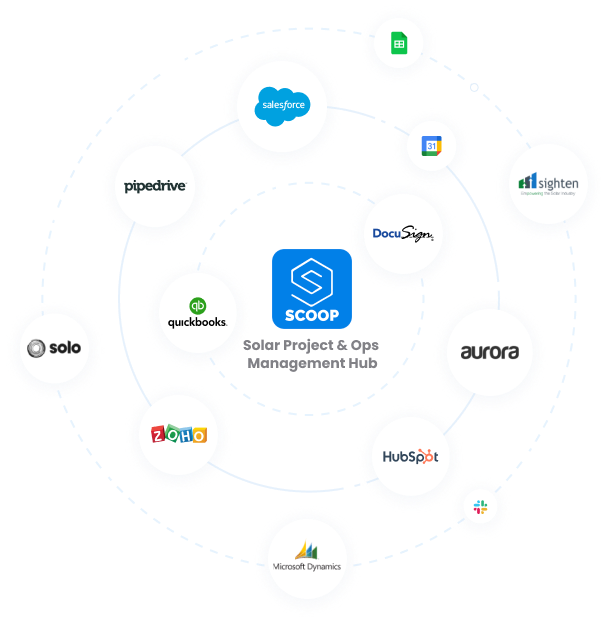
If your solar sales team is currently using a CRM such as HubSpot or Salesforce for lead management and marketing automation, an integration between Scoop and your CRM will effortlessly transfer solar project data between these two tools. These specific CRM systems can come with a high price point but since all Scoop pricing plans include unlimited users, you can actually reduce software costs by only paying for CRM seats for your sales team and having your solar project manager and others access the same data while working out of Scoop.
View Real-Time Reporting
Reporting is another way to use project management automation. By creating reports that are connected to underlying project data and update automatically, your solar company can more easily identify areas of opportunity and make informed business decisions.
LOOXY is Scoop’s analytics platform that provides an at-a-glance view of solar project progress and makes job planning simple. LOOXY enables growing solar energy companies to visualize everything from deals and contract value in various stages of your pipeline, sales rep monthly commission reports, number of completed service visits in a given time period, invoicing timelines and project costs, and more.
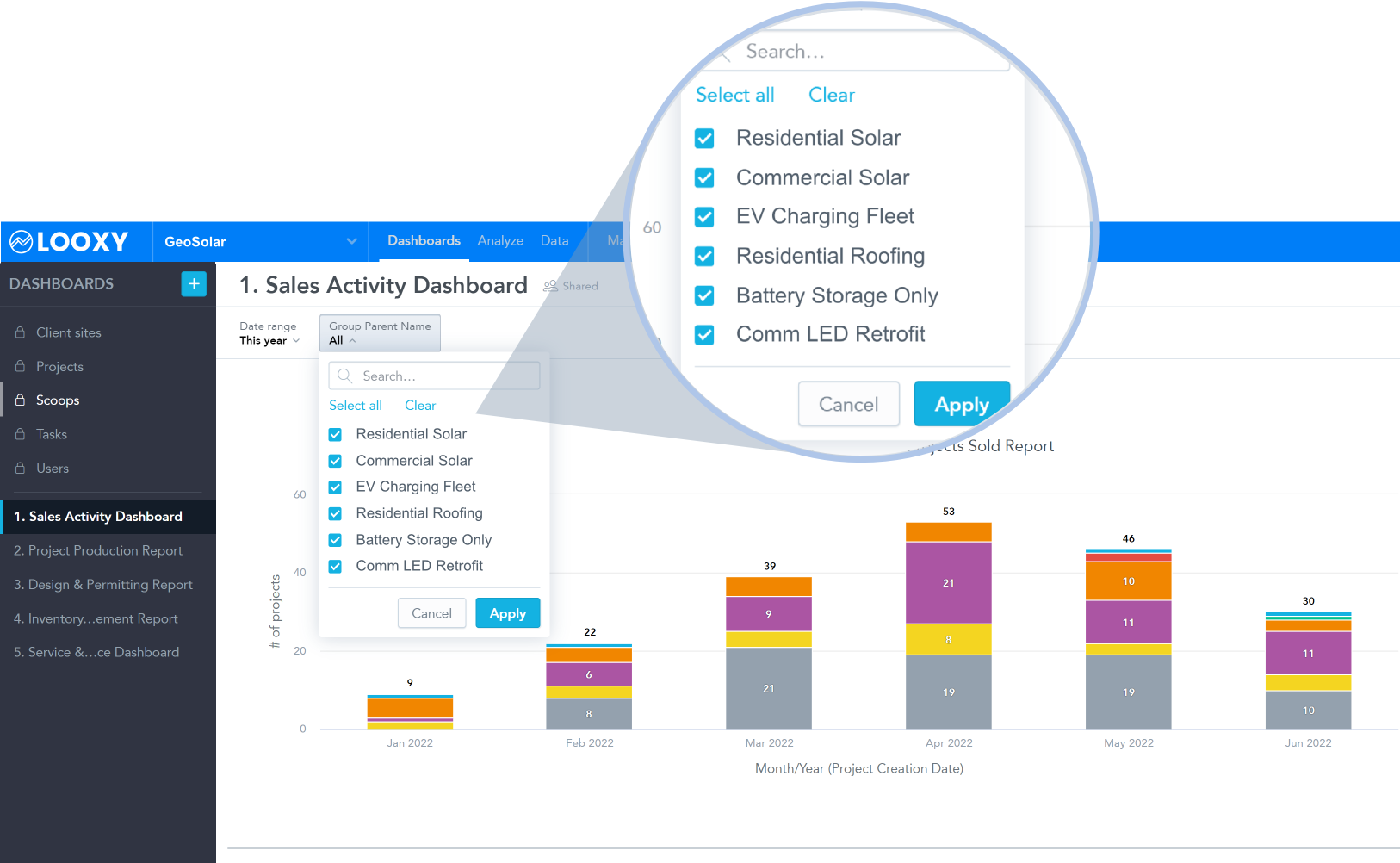
All things considered, automation is one of the most powerful solar project management features. Scoop is a leader in this technology category, driving the adoption of mPMA software for field operations. If your team is in need of a platform to manage renewable projects, reach out to us today.
Solar Project Management Automation FAQs
What is the best CRM for project management?
The best CRM for project management depends on your goals for the software but there are certain factors you should consider: its feature set, the software company’s working knowledge of the solar energy, renewable energy, or construction industry, the ability to integrate with other tools, and whether or not they offer a mobile app to enable those who primarily work from a job site instead of the office.
Can you use project management software for construction management?
Since both construction and solar projects rely on field services, there is overlap in many of the features. For example, a construction project manager must also have a way to organize client and site data, track project status, access engineering documents, and view the performance of your construction projects.
Can Scoop be used for job training?
Yes! Thanks to custom permission schemes, your Scoop admin can easily manage teams and update the data and projects that each position has access to. This feature can come in handy for job training, allowing new employees and solar installers to practice in Scoop before receiving full access.
How does a solar system work?
Solar technology converts sunlight to generate electricity either in solar photovoltaic (pv) cells, or by concentrating sunlight through solar mirrors. The electricity is either stored in either a solar battery or in a thermal storage device.
